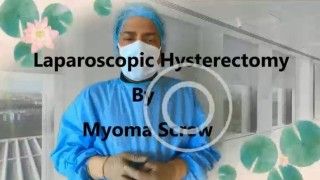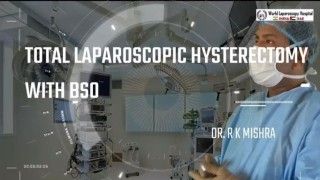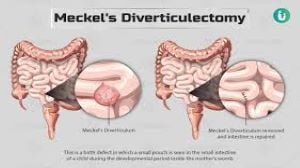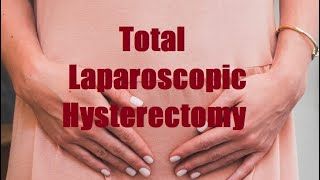Ectopic Pregnancy: Laparoscopic Expertise from World Laparoscopy Hospital
Add to
Share
996 views
Report
11 months ago
Description
Ectopic pregnancy is a serious condition where a fertilized egg implants outside the uterine cavity, most commonly in the fallopian tubes. This medical emergency requires prompt diagnosis and treatment to prevent complications such as rupture and severe internal bleeding. With advancements in medical technology, laparoscopic techniques have become the gold standard for the management of ectopic pregnancies. World Laparoscopy Hospital is at the forefront of these innovations, providing cutting-edge treatments that ensure minimal invasiveness and swift recovery for patients. Understanding Ectopic Pregnancy Ectopic pregnancies occur in approximately 1-2% of all pregnancies. The most common site is the fallopian tube (tubal pregnancy), but ectopic pregnancies can also occur in the ovary, cervix, or abdominal cavity. Factors contributing to ectopic pregnancy include pelvic inflammatory disease (PID), previous ectopic pregnancies, tubal surgery, fertility treatments, and certain structural abnormalities of the reproductive organs. Symptoms and Diagnosis The symptoms of an ectopic pregnancy can vary but often include: - Sharp or stabbing pain in the abdomen or pelvis - Vaginal bleeding or spotting - Shoulder pain (referred pain due to internal bleeding) - Weakness, dizziness, or fainting (signs of significant internal bleeding) Diagnosis typically involves a combination of: - Transvaginal Ultrasound: To visualize the location of the pregnancy. - Blood Tests: To measure levels of the hormone hCG (human chorionic gonadotropin), which can be lower than expected in ectopic pregnancies. - Physical Examination: To assess for tenderness or masses in the pelvic area. Laparoscopic Techniques in Treating Ectopic Pregnancy Laparoscopic surgery, also known as minimally invasive surgery, involves small incisions and the use of a camera (laparoscope) to guide the procedure. World Laparoscopy Hospital employs advanced laparoscopic techniques for the management of ectopic pregnancies, offering several key benefits: 1. Laparoscopic Salpingostomy This technique involves making a small incision in the fallopian tube to remove the ectopic pregnancy, preserving the tube for future fertility. It is typically performed when the tube is not ruptured, and the ectopic pregnancy is relatively small. Procedure: - A laparoscope is inserted through a small incision near the navel. - Surgical instruments are introduced through additional small incisions. - The surgeon makes an incision in the fallopian tube to remove the ectopic tissue. - The tube is left to heal naturally, which can help maintain tubal patency and fertility. 2. Laparoscopic Salpingectomy In cases where the fallopian tube is severely damaged or the ectopic pregnancy is large, removal of the affected tube (salpingectomy) may be necessary. This procedure is also done laparoscopically to minimize recovery time and surgical risks. Procedure: - Similar to salpingostomy, a laparoscope and instruments are inserted through small incisions. - The fallopian tube containing the ectopic pregnancy is carefully detached and removed. - This procedure is often necessary if there is significant bleeding or tubal rupture. 3. Methotrexate Administration In some cases, medical management with methotrexate, a chemotherapeutic agent, can be an alternative to surgery. Methotrexate works by stopping the growth of rapidly dividing cells, including the ectopic pregnancy tissue. Procedure: - Methotrexate is administered as an injection, typically in a single dose. - Follow-up involves monitoring hCG levels to ensure the ectopic pregnancy resolves. - This option is considered when the ectopic pregnancy is small, hCG levels are low, and the patient is stable without signs of rupture. Advantages of Laparoscopic Techniques Minimally Invasive Laparoscopic surgery involves small incisions, resulting in less trauma to the body compared to traditional open surgery. This means: - Reduced postoperative pain - Shorter hospital stay - Faster recovery time - Minimal scarring Precision and Safety The magnified view provided by the laparoscope allows surgeons to perform the procedure with high precision. This is crucial in delicate areas such as the fallopian tubes, where preserving as much tissue as possible can impact future fertility. Reduced Risk of Adhesions Adhesions, or scar tissue, can form after surgery and cause complications such as chronic pain or infertility. Laparoscopic surgery reduces the risk of adhesions compared to open surgery. Better Cosmetic Results With smaller incisions, laparoscopic surgery results in less visible scarring, which can be important for many patients. Postoperative Care and Recovery After laparoscopic surgery for ectopic pregnancy, patients can expect a relatively quick recovery. Key aspects of postoperative care include: - Pain Management: Over-the-counter pain relievers or prescribed medications can manage discomfort. - Rest and Activity: Patients are advised to rest initially but can gradually resume normal activities as tolerated. - Follow-Up Appointments: Regular follow-up is essential to monitor healing and ensure hCG levels return to normal. - Emotional Support: An ectopic pregnancy can be emotionally challenging. Counseling and support groups can be beneficial. Conclusion The advanced laparoscopic techniques for ectopic pregnancy offered by World Laparoscopy Hospital represent a significant leap forward in the management of this condition. By combining expertise, state-of-the-art technology, and a patient-centered approach, World Laparoscopy Hospital ensures the best possible outcomes for women facing ectopic pregnancies. Whether through surgical intervention or medical management, the focus remains on preserving health, fertility, and overall well-being.
Similar Videos






